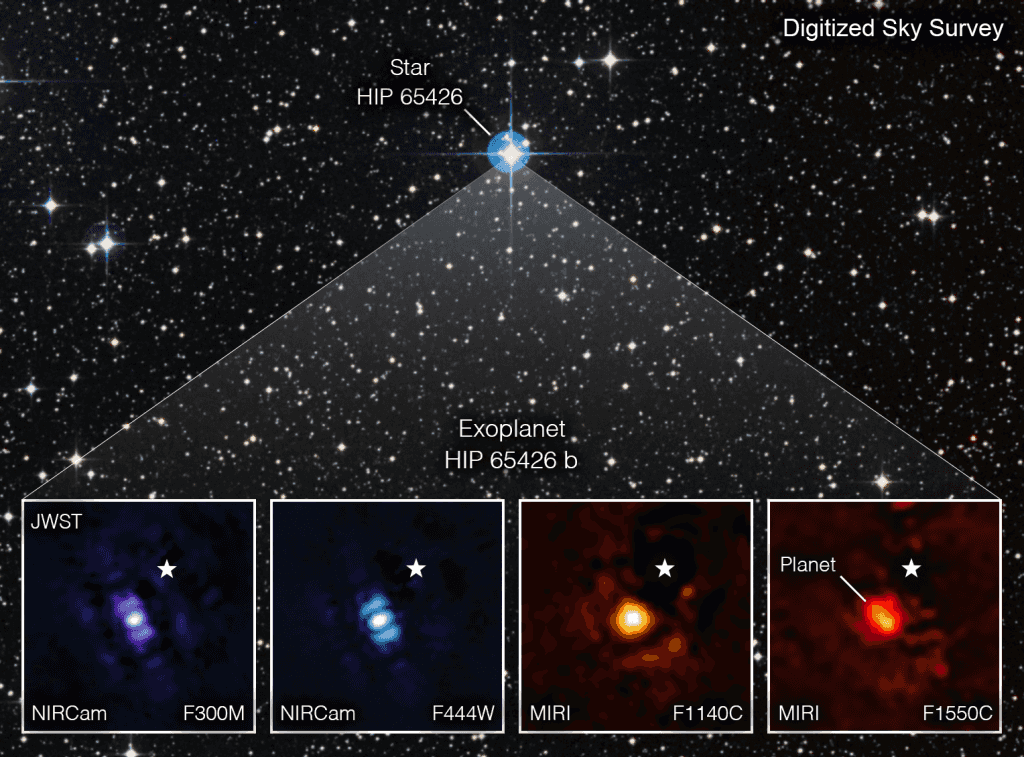On Sept. 1, NASA released the very first image of a planet beyond our solar system, or exoplanet, taken by the James Webb Space Telescope. Analysis of the historic image was led by UC Santa Cruz professor Andrew Skemer and postdoctoral scholar Aarynn Carter, who was one of the first people to see the image of the distant world.
ALERT: China to launch space drone swarm attack satellite – it’s like something out of ‘Star Wars’
“It was exhilarating,” Carter said. “Seeing the image for the first time, there were a lot of emotions all at once for me because I’ve been working on this for five or six years. It was really a magical moment.”
The James Webb Space Telescope launched on Dec. 25, 2021 and Carter, who specializes in the study of exoplanets, has been preparing for its launch for years while attaining a PhD in physics at the University of Exeter in the United Kingdom. Carter is also the lead author of the study focused on capturing images of exoplanets using the cutting edge instruments on the James Webb Space Telescope.

“I’ve been involved with the research since the start of my Phd in 2016,” Carter said. “My two advisors at the time, Sasha Hinkley and David Singh, looped me in and together we built this program to observe exoplanets directly with the JWST.”
To create images of stellar objects, the James Webb Telescope captures light from nearby stars using a near-infrared camera and a mid-infrared instrument, but the starlight is too bright for astronomers to detect smaller objects like exoplanets, so they equip the instruments with filters, called coronagraphs to block out the excess light.
“We precisely position the coronagraphs in front of the star and that blocks the vast majority of the stellar light,” said Carter. “And with a few extra image processing tricks, we can subtract the little bit of starlight left and we’re left with just the planet.”
After filtering out the starlight, the telescope captured an image of an exoplanet about seven times the mass of Jupiter called HIP65426b, which became the target of astronomers because it’s extremely far from its star, about 100 times farther than Earth from the Sun. Soon after HIP65426b was discovered in 2017, Carter and his fellow astronomers at Exeter found that it would be in the range of the telescope.
“It was a combination of getting lucky and the limited sample we have,” Carter said. “At the moment, we can only really take a direct image of about 20 planetary mass objects, but we know of 5,000 exoplanets, so there’s just a small slice we can do this direct imaging with. We got a bit lucky when this planet was discovered just as we were putting our proposal together.”
Now that astronomers know they can capture direct images of large exoplanets bigger than Jupiter using the James Webb Space Telescope, they can begin to think about capturing images of other stellar objects with lower mass.
“In the future, I think we could start to image objects the size of Uranus or Neptune around other stars,” Carter said. “And maybe even a little lower, like the biggest super-Earths or in the sub-Neptune range.”
Capturing and developing the image of HIP65426b was a massive collaborative effort with more than a hundred researchers across the world. Carter was the lead author of the study, but he could not have laid eyes on the image of the exoplanet without the international team of scientists, and the work of his colleague, Sasha Hinkley, associate professor of physics and astronomy at the University of Exeter. Hinley led the international collaboration, which included Skemer, who is a co-principal investigator of the program.
After further analysis of the image data, researchers will prepare a paper that they will submit to journals for peer review. Beyond the work with HIP65426b, Carter will continue chasing the thrill of capturing images of other exoplanets within the telescope’s range.
“I really love this work, and the sense of exploration when you’re looking at something brand new that no one has ever seen before,” Carter said. “It’s like I am the first person to ever see the image of this planet with this telescope. It makes everything so special and doing all of this work really worth it.”
___
(c) 2022 the Santa Cruz Sentinel
Distributed by Tribune Content Agency, LLC.



